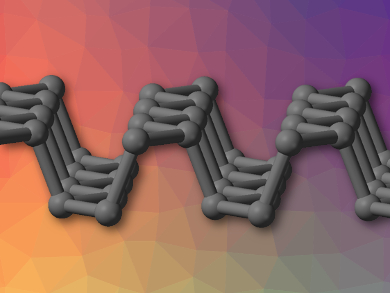Van-der-Waals (vdW) heterostructures are a type of layered material composed of different 2D materials. The name of these structures stems from the fact that the layers are held together using van-der-Waals forces. Such heterostructures can be excellent materials for use in electronic and optoelectronic applications because they do not suffer from any lattice mismatch and can produce efficient semiconducting junctions.
Zhongming Zeng, Chinese Academy of Sciences, Suzhou, Yanhui Xing, Beijing University of Technology, China, and colleagues have created an ultraviolet (UV) photodetector that uses a p–n diode. The junction in the detector is realized using a vdW heterostructure composed of black phosphorous (BP, pictured) and rhenium disulfide (ReS2).
The researchers fabricated the heterostructure by depositing Te-doped BP flakes onto a polydimethylsiloxane (PDMS) film using mechanical exfoliation. This BP-PDMS film was then transferred onto a HfO2/Si substrate and ReS2 flakes were aligned on top of the BP flakes under an optical microscope. The contact patterns were defined by electron-beam lithography (EBL) and electrodes composed of Ni/Au were deposited through an electron beam evaporation method. The researchers finally applied a bias voltage across the electrodes of the heterostructure and a voltage was also applied to the n-doped silicon to function as the back-gate.
Under UV light, the photodetector initially was found to possess a high photoresponsivity of 4,120 A W–1. The photoresponse properties were tunable by altering the back-gate voltage, optimizing the voltage led to a maximum photoresponsivity of 8,539 A W–1 at 4.4 V. The team further investigated the effects that the channel length had on the photoresponsivity of the device. They found that a BP length of 1 µm was optimal and could produce a photoresponsivity of up to 11,811 A W–1.
- Ultrahigh-photoresponsive UV photodetector based on a BP/ReS2 heterostructure p–n diode,
Shiwei Cao, Yanhui Xing, Jun Han, Xin Luo, Wenxing Lv, Weiming Lv, Baoshun Zhang, Zhongming Zeng,
Nanoscale 2018.
https://doi.org/10.1039/c8nr05291c


